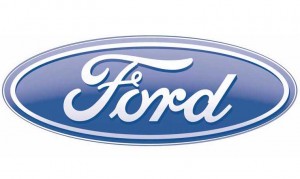
Ford posts a huge turnaround during the worst year for the auto industry since the Great Depression.
Ford Motor Co. reported net income of more than $2.7 billion, or 86 cents per share, a $17 billion improvement from a year ago, as its comeback plans exceeded expectations by the delivering the maker’s first full year of profitability since 2005.
The full-year profit included net income of $868 million or 25 cents per share in the fourth quarter, $6.8 billion better than the company reported a year ago when many analysts were predicting Ford would be forced into bankruptcy right alongside General Motors and Chrysler.
The fourth-quarter numbers included a pre-tax operating profit of $707 million in North America, a market which many observers had written off as hopeless. Last year, Ford’s North American Operations lost $2.6 billion in the fourth quarter.
Ford also posted pre-tax operating profits of $454 million for the full-year, a $7.3 billion improvement from a year ago, with significant help from Ford Credit, which itself rebounded in 2009 to post a $1.3 billion profit.
“While we still face significant business environment challenges ahead, 2009 was a pivotal year for Ford and the strongest proof yet that our One Ford plan is working and that we are forging a path toward profitable growth by working together as one team, leveraging our global scale,” said Ford President and CEO Alan Mulally, who also noted that Ford gained market share around the world last year.
The Ford CEO gave credit to a line of new products that have been resonating well with consumers. A strong, outside vote of support came earlier this month, when a jury of 49 U.S. and Canadian journalists voted the Ford Fusion Hybrid North American Car of the Year, while the automaker’s new Transit Connect was named North American Truck of the Year. The seeming product renaissance has been widely hailed, even in non-automotive circles. The high-tech site, CNET.com, earlier this month named the Fusion its “Tech Car of the Year.”
“We delivered very encouraging results in the fourth quarter and for full year 2009 despite severe economic headwinds, although our transformation remains a work in progress,” said Lewis Booth, Ford executive vice president and chief financial officer
Ford executives also emphasized the company was continuing to trim automotive structural costs, reducing them by $500 million compared with the fourth quarter 2008, bringing the total 2009 reduction to $5.1 billion. That was well in excess of the company’s target of about $4 billion.
Ford also ended the generally dismal year of 2009 with $25.5 billion of automotive gross cash and $34.3 billion in automotive debt, while posting positive cash flow for the fourth and positive cash flow for the entire year.
If there’s one thing observers routinely fret about, it’s Ford’s debt, which the company couldn’t largely eliminate, as its competitors did, through bankruptcy. One reason Ford was able to position itself so well during the last year’s downturn was the decision by CEO Mulally, shortly after joining the company, in 2006, to effectively mortgage Ford’s assets. But the automaker has been taking steps, in recent months, to shed debt through steps like debt-for-equity swaps.
Mulally also felt confident enough to state publicly for the first time that Ford expected to be profitable for the full year 2010, on a pre-tax basis excluding special items, for North America as well as posting positive operating-related cash flow.
As a result of Ford’s 2009 U.S. financial performance, the company will pay profit sharing to 43,000 eligible U.S. hourly employees consistent with the 2007 UAW-Ford Collective Bargaining Agreement. The average amount is expected to be approximately $450 per eligible employee.
As previously announced, Ford is not awarding salaried employee performance bonuses globally under the company’s bonus plan for 2009 company performance. The company announced earlier this month that U.S. salaried employees will receive merit increases in 2010, and the company’s 401(k) matching program was reinstated on Jan. 1, 2010.

